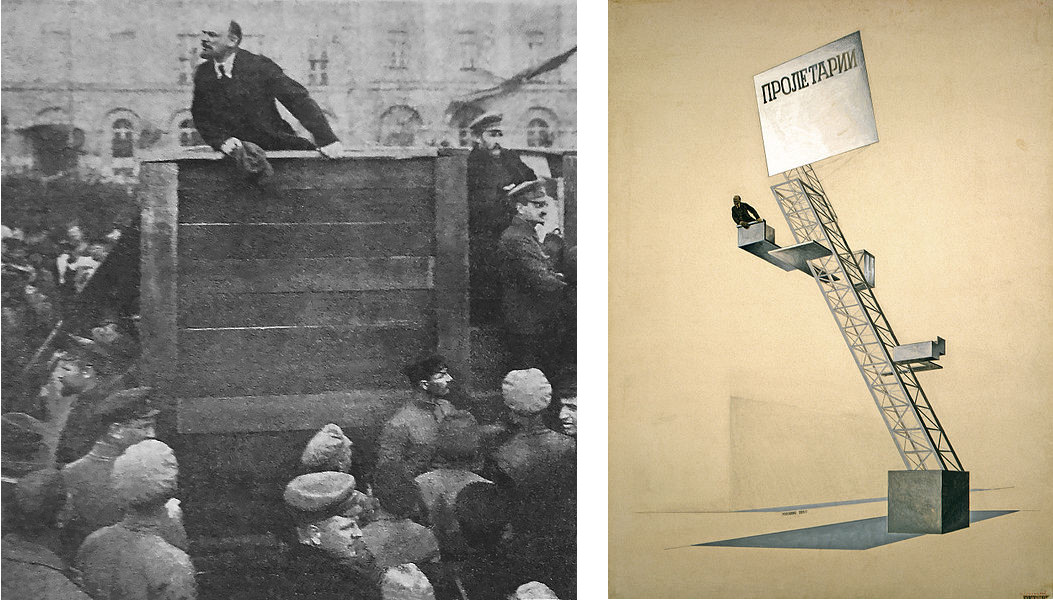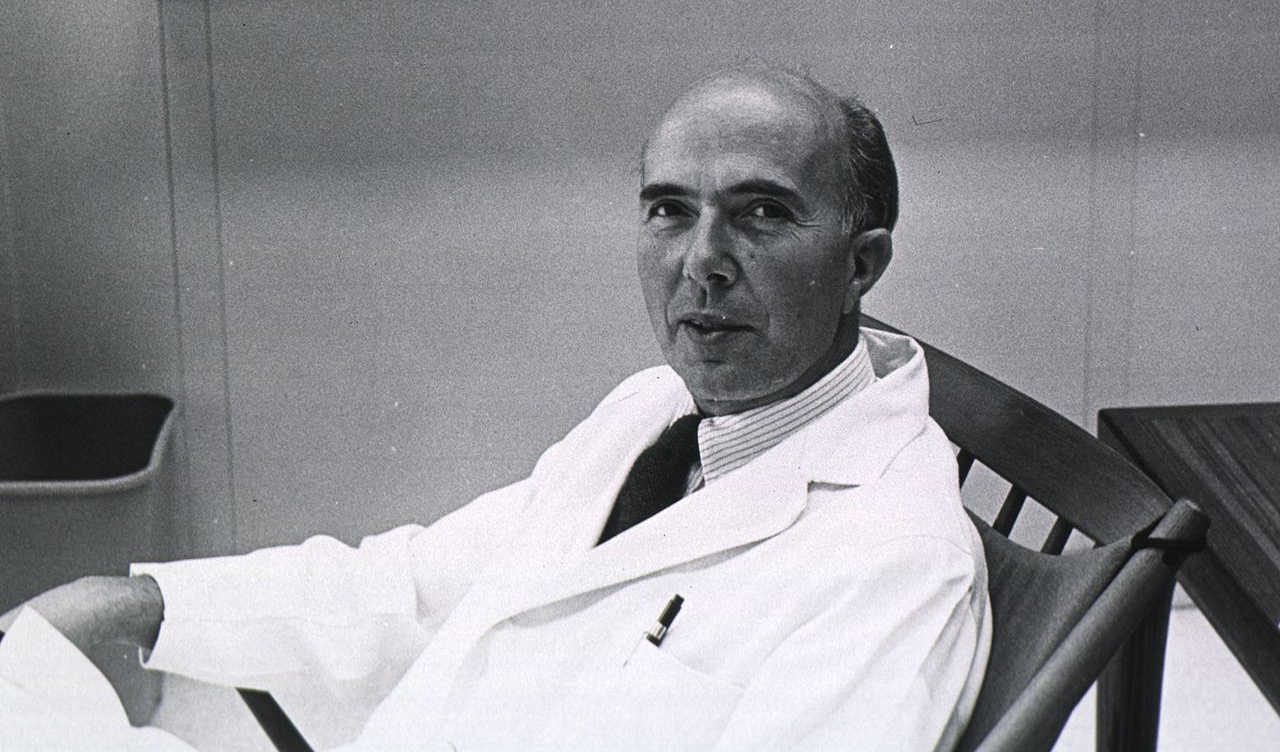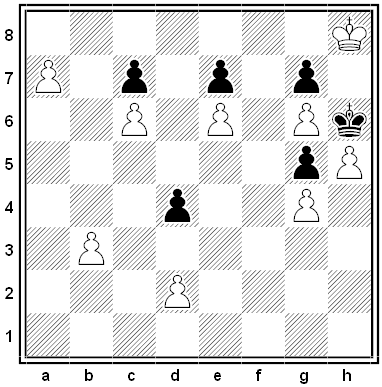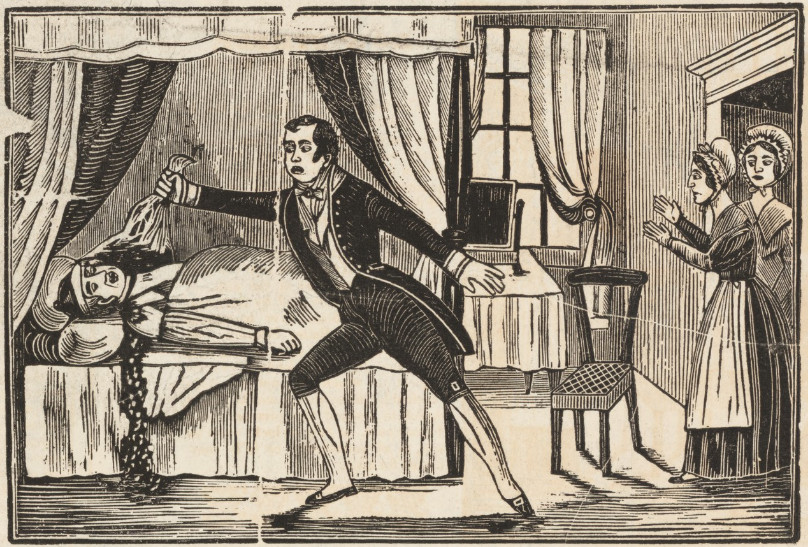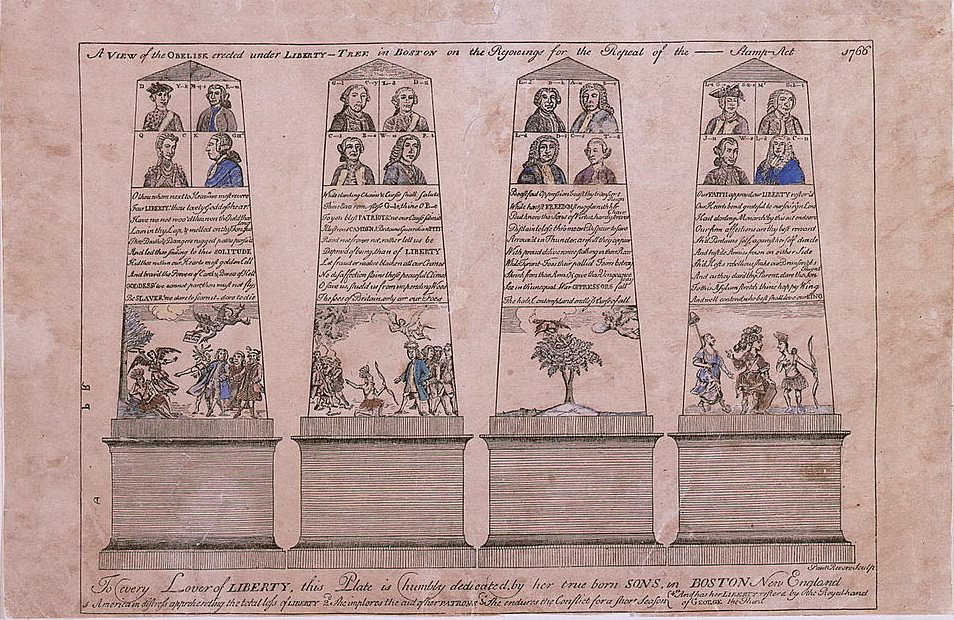In 1920, after Lenin delivered a speech in Petrograd to troops departing to fight in the Soviet-Polish war, Russian artist El Lissitzky challenged his architecture students to design a speaker’s platform on a public square. The result was the Lenin Tribune, a rostrum that can bear its speaker aloft to address a crowd of any size. In a letter to the art historian and critic Adolf Behne, Lissitzky wrote:
I have now received some sketches of former works and have reconstructed the design. Therefore I do not sign it as my personal work, but as a workshop production. The diagonally-standing structure of iron latticework supports the movable and collapsible balconies: the upper one for the speaker, the lower one for guests. An elevator takes care of transportation. On top there is a panel intended for slogans during the day and as a projection screen at night. The gesture of the entire speaker’s platform is supposed to enhance the motions of the speaker. (The figure is Lenin.)
Here the message reads PROLETARIAT. Lissitzky later said he regretted not publishing the design when Vladimir Tatlin’s Monument to the Third International was attracting attention, so that the two might have competed against one another.

